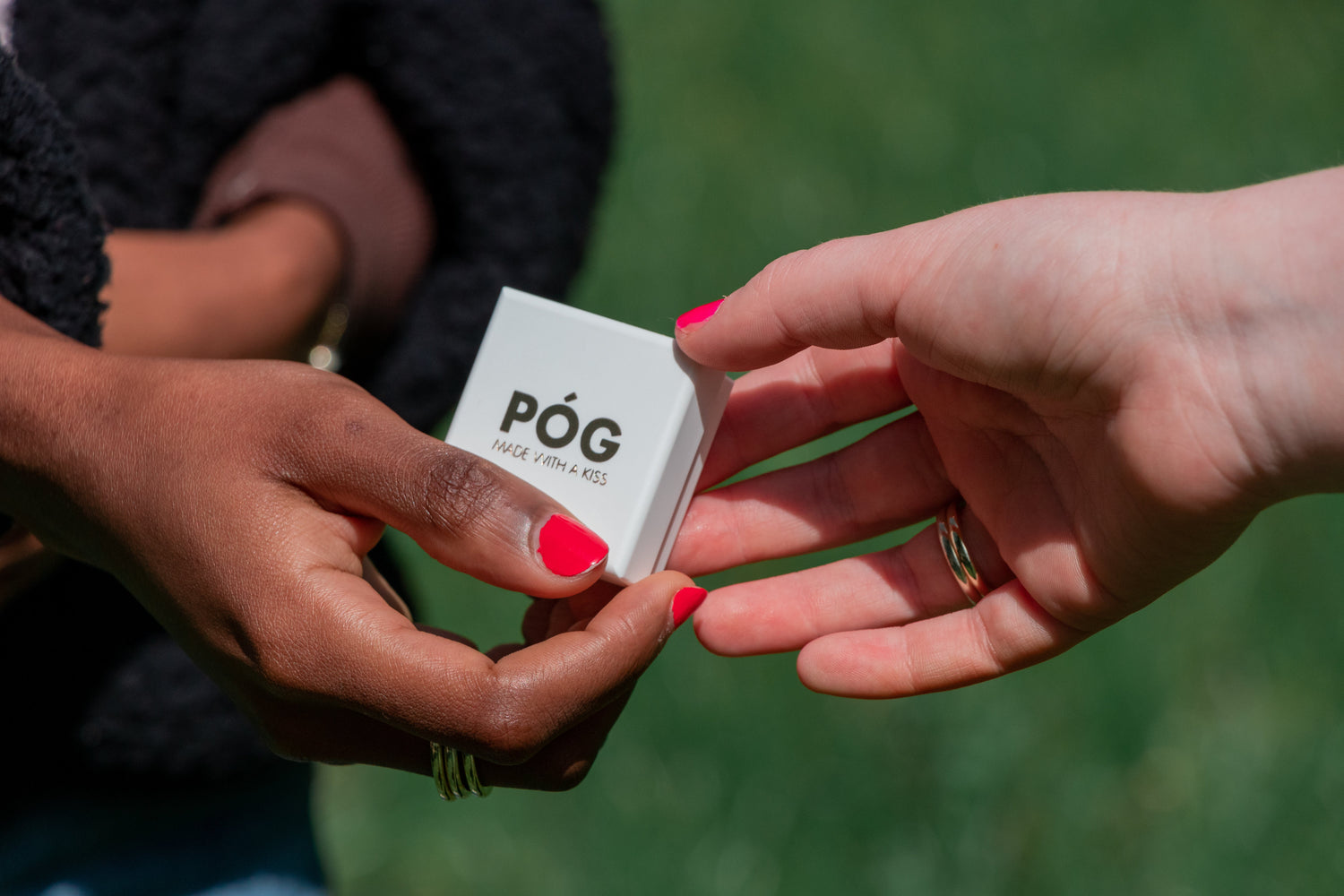
Back to School Essentials: Are Fidget Rings Good For Anxiety?
Melissa CurrySeptember. The season of fresh starts, personal growth, and… anxiety?
Whether you’re a fresher leaving home for the first time, a second year trying to figure everything out or a final year just hoping to survive until graduation: it’s a lot.
Just the social side of college and university alone is more than enough to trigger anxiety, especially as we’re all just trying to find our feet in this disconnected, digital world we’ve landed in.
Even pre-pandemic, I spent my Freshers' Ball eating candy floss (it was carnival-themed) and anxiously twiddling my thumbs, hoping to make just one friend. Now, it is harder.
But, it’s also a shared experience.
The best thing you can do, in my opinion, is not put too much pressure on yourself to make friends and be sociable. What happens happens. You’ll meet the right people at the right times across your life. That time might not be now.
You can find friends anywhere. University is a time to find mentors to learn from while you’re still figuring out who you want to be.
But, that being said, you will still find yourself in social situations, and an anxiety ring could be your new best friend.
What is an Anxiety Ring?
You’ve probably already seen these on Instagram Ads or TikTok, but if you haven’t, anxiety or fidget rings are designed with tactile elements that you can play with.
The three main types you’ll usually see are the beaded design, the spinning band (where the centre band twists), or the spinning design where it’s the decorative part that spins.
Think of them as the cooler, far more fashionable alternative to fidget toys that double as wearable therapy. And they’re completely acceptable in classrooms - unlike noisy fidget spinners, or bringing your actual therapist.
They’re so discreet that, if you don’t visibly sweat and shake like a leaf every time you do a presentation, no one will even know you’re nervous.
Check out our spinning signet ring. Would you ever know that it was anything more than a bold style choice?

Who Are Anxiety Fidget Rings For?
The easy answer is everyone. But don’t worry, there’s more to it than that.
The Anxious
If you suffer from anxiety, you’ll know just how many symptoms come with it, both physically and mentally. It’s not just restlessness, it’s the racing heart rate, the inability to breathe, difficulty concentrating, sweaty palms, nail-biting, skin-picking, and the list goes on.
When you’re experiencing these feelings, a distraction can sometimes be your most powerful tool.
During exam season (which is thankfully still a future problem), you’ll want a quick and easy way to recenter.
The Habit-Breakers
I’m sure we all have habits we’d love to break, especially when we’re in the season of reinventing ourselves on the inside and outside. Nail biting and skin picking are two of the big ones. Many of us pick up these habits early in life and can seriously struggle to stop them, leading to shame and discomfort.
All habits go through a cue, craving, response, and reward process. Let’s say the cue is an uncomfortable situation. You crave physical stimulation (the reward). Normally, you’d bite your nails, but with an anti-anxiety ring, you can get the exact same reward but with a different response. You’re only changing one part of the equation instead of rewriting it entirely.
That’s why fidget rings make effective replacement habits.
Note: You can read more about this in James Clear’s Atomic Habits, a must-read for anyone.
The Neurodivergents
If you’re autistic or an ADHDer, stimming is your friend. Stimming is a repetitive behaviour intended to self-stimulate, regulate and soothe. From an outside, neurotypical perspective, it can look like unusual movements or sounds e.g.: rocking, hand flapping, or foot tapping.
For me, as an ADHDer, those movements just feel right. Until someone points it out. Thanks, Mum.
Fidget rings offer that stimulation whenever you need it, bringing comfort without drawing any unwanted attention to yourself (because unfortunately most of us still feel the need to hide it).
The Bored
Why not? It’s fun. And you won’t love every class you attend. And there’s a lot of sitting still when humans naturally want to move.
Do Fidget Rings Actually Help with Anxiety?
Let’s get to the important question: Do they work?
Yes. For short-term relief.
Many people swear by anxiety rings as a coping mechanism (not a treatment), claiming that it keeps them grounded and gives them something to focus on when they’re in uncomfortable situations. And to save you time, yes, that’s the verdict the other articles on Google come to too.
Repetitive movements can help you focus your breath and enter a more mindful state, even during panic attacks (depending on the situation). Even taking just 30 seconds of conscious spinning can help you relax and ease tension.
If you experience a lot of negative self-talk and unhelpful thoughts, having an action to redirect your attention to can help silence those thoughts and reset - just like a good nap can, only quicker.
—
Personally, you’ll never find me out and about without my phone in my hand. Not because I’m addicted to anything in particular - I probably only use five apps max - but because pretending to use it gives me comfort in uncomfortable situations.
If you do the same thing, remember that a fidget ring doesn’t need to be recharged, and you can use it in situations where you’re trying to politely “live in the moment”, like a date.
Life hack: Did you know our Póg rings have a secret meaning? So, if you’re receiving any unwanted attention, maybe move it to your ring finger and pretend to be engaged. It’s not 100% effective, but it can’t hurt to try.
What Makes a Good Anxiety Ring?
As I mentioned earlier, there are three main types of anxiety rings, but I’d only recommend the spinning kind.
The ones with smaller balls that you can roll around can be difficult to move once it’s on your finger, and taking it off defeats the purpose. You might as well just embrace Y2K and make a bunch of fun, beaded bracelets. It’ll create the same effect and you’ll be ready for Taylor Swift’s international Eras Tour. That’s my plan.
The spinning rings are more like fidget spinners (or spinning tops, if they still exist). You can just spin them once and zone out for a bit.

Colour is another important tool in your anxiety-relief toolkit. Colour psychology is at work everywhere because it has a very real, very powerful emotional effect. You likely have one or two colours that make you feel calmer or happier. I surround myself with pink and orange because they never fail to boost my mood.
Most calming rings, however, lack colour. And while silver and gold are pretty and timeless, they don’t quite have the same mood-boosting effect.
That’s why we brought the rainbow into our PÓG spinning ring.

The Final Verdict
Just because our spinning rings look magical, it doesn’t mean they’ll instantly cure your anxiety (sorry!). You may still need therapy and/or an actionable plan to reduce the stress in your life.
Spinning anxiety rings can, however, provide some much-needed short-term relief in stressful situations: exams, deadlines, first days and first dates.
To help make this fall season and the next academic year one of health, love and happiness, students can get 15% off with the discount code: Student23
And in the spirit of universal love, we encourage you to share a PÓG with someone who needs it. Every Kiss shared brings more love to the world.
—
If you are struggling with anxiety and think you need help, always reach out to your school to find out what support they can offer you.




